ear health
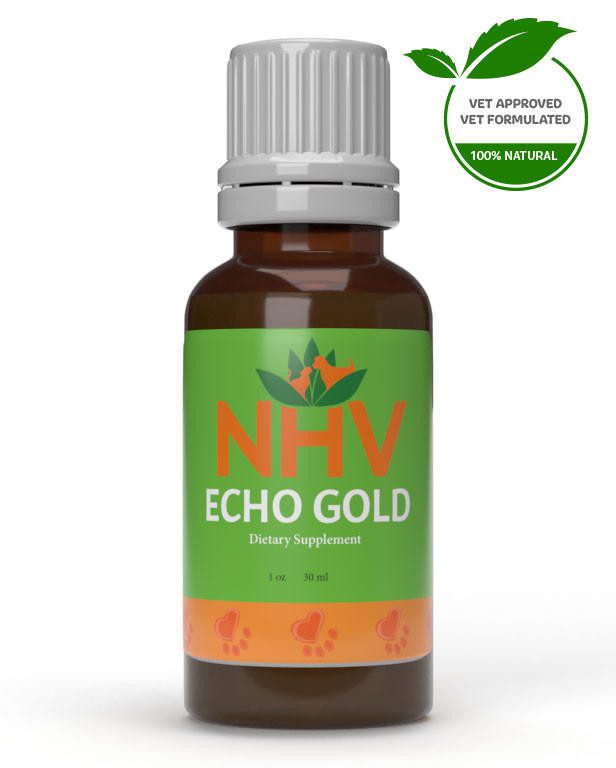
free shipping over $100 (USA & Canada)
1-877-937-4372 the pet expert hotline
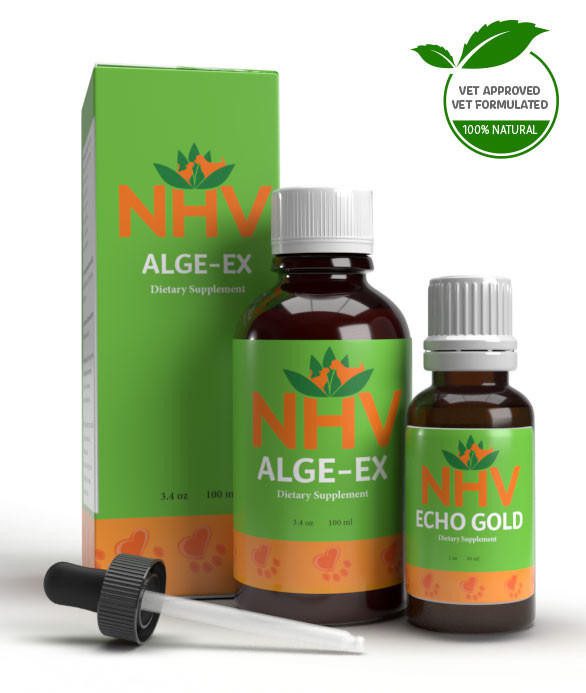
Keeping your dog’s ears clean is an important part of their overall health. Learning how to correctly clean dog ears can help prevent infections and other problems. This guide will walk you through dog ear anatomy, signs of infection, and how to clean your dog’s ears safely.
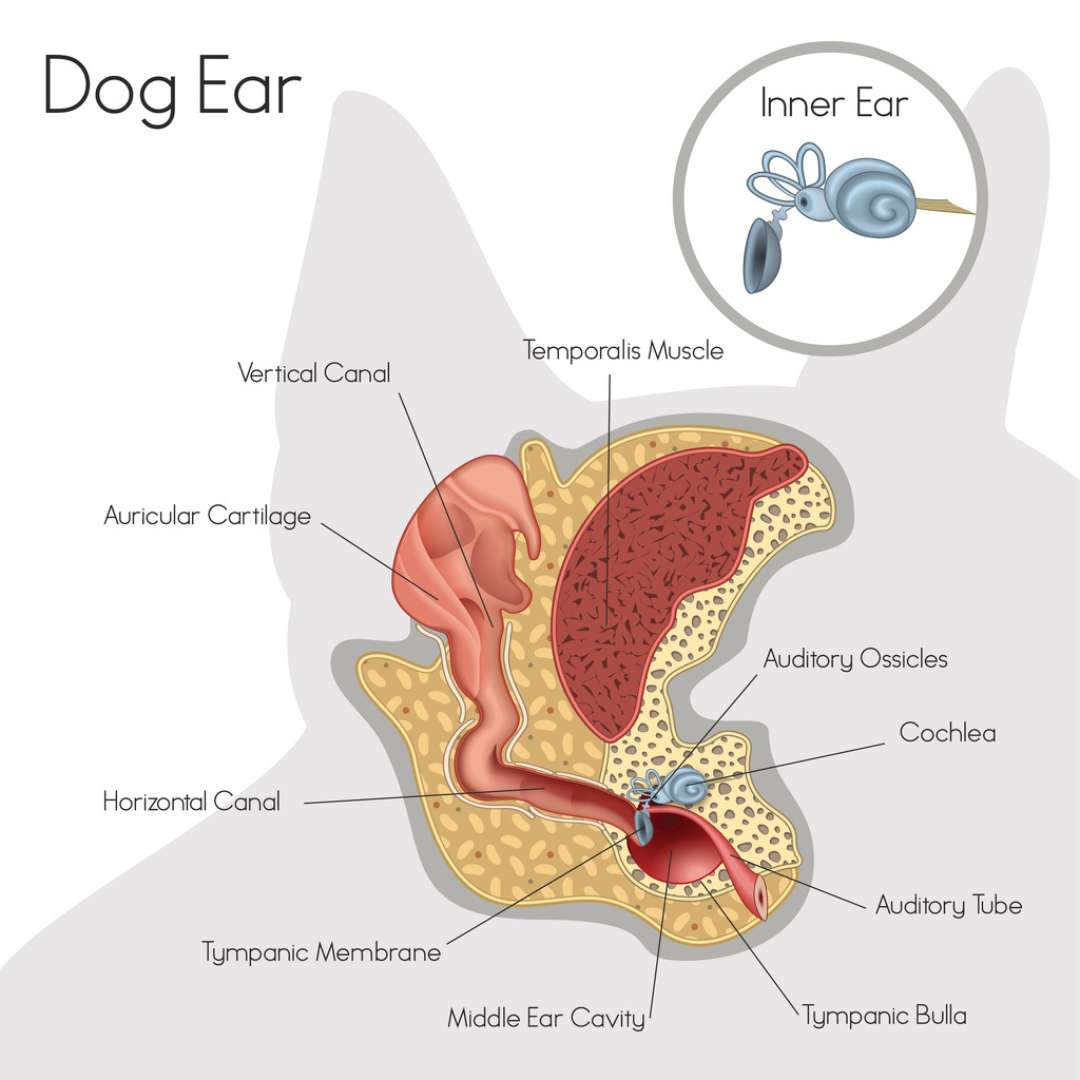
The anatomy of your furbaby ear matters, pups with floppy ears are more likely to have chronic ear problems than their counterparts with pointy, erect ears.
Dogs with floppy ears are prone to chronic ear problems compared to those with pointy, erect ears due to differences in ear anatomy.
To obtain a better understanding of the ear, let’s break down the anatomy of the organ. The ear consists of three components, the outer, middle, and inner ear. The outer ear includes the pinna (the part you see that is made of cartilage and covered by skin, fur, or hair) and the ear canal. The size and shape of the pinna can vary by breed and can result in different requirements for grooming and maintenance.
The middle ear starts with the eardrum and includes three tiny bones (hammer, anvil, stirrup), two muscles (oval window, eustachian tube), and a small air-filled chamber. Its structure amplifies sound and links to the back of the nose, allowing pressure equalization. Keeping this area clean and dry is crucial for sound transmission and our auditory system.
The inner ear is a highly complex structure. This part includes: the cochlea, responsible for hearing; the vestibular system, the organ of balance. The nerve endings within the inner ear are responsible for transmitting vibrations to electrical impulses, which allows the brain to interpret these impulses so we can hear! The vestibular system comprises three fluid-filled loops that detect head rotation and body position. This system is what allows rapid movements and response to our external environment. It’s common to notice slight changes in your pet’s gait as they age. However, it’s essential to inform your vet about these changes to rule out any underlying issues.
Infections of the ear are common in dogs and, in most cases, can be remedied with regular cleanings. Always monitor the ear for signs of inflammation (redness, warmth, or swelling), injury, secretions, odor, or excessive ear wax. Routine maintenance is always easier than treatment.
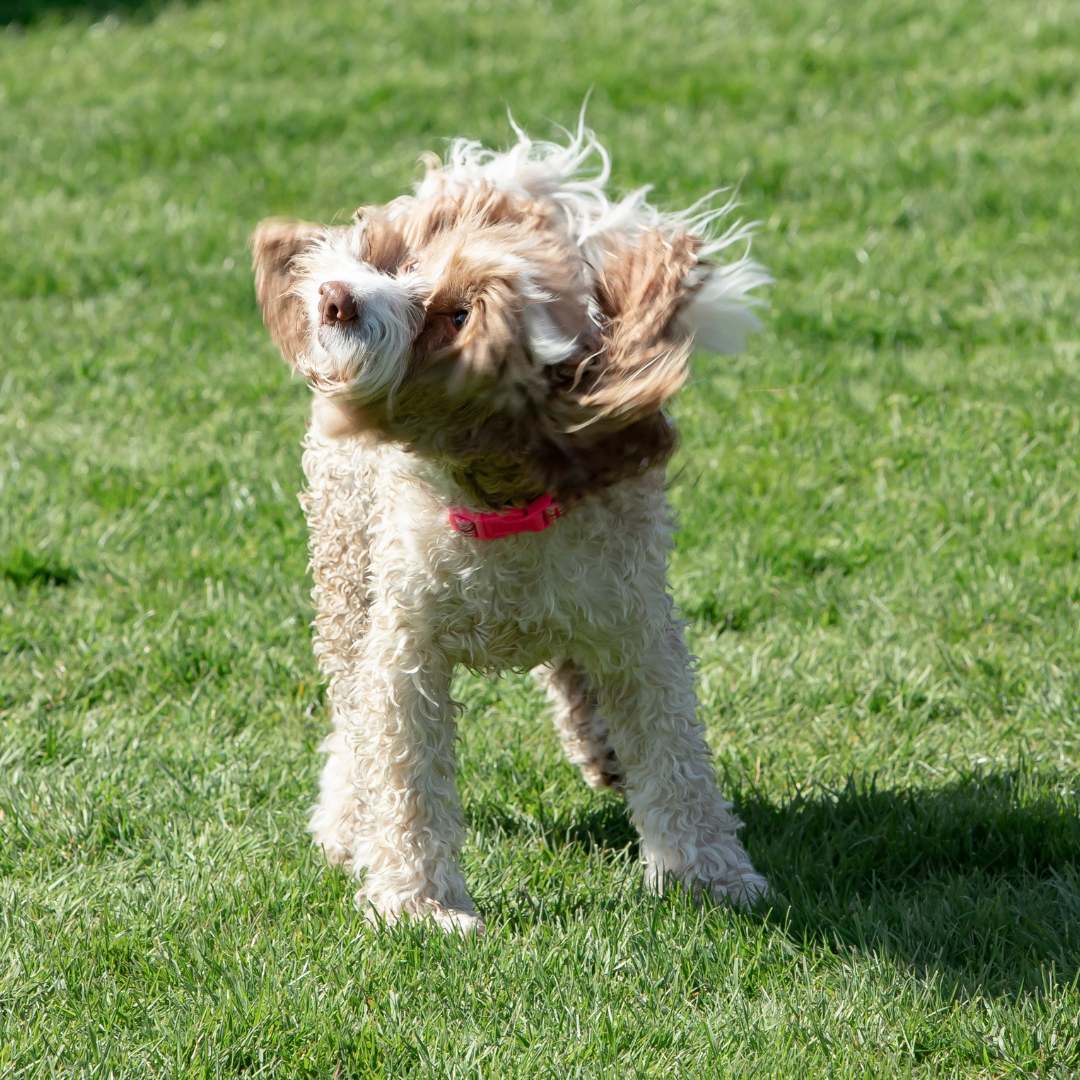
Additionally, when your pup is experiencing hearing loss, scratching, head shaking, dizziness, or loss of balance, this can often be due to build-up, inflammation, or infection within any of these areas. Prompt action and attention is a key component to a speedy recovery.
Always monitor the ear for signs of inflammation (redness, warmth, or swelling), injury, secretions, odor, or excessive ear wax.
Before taking on the task of cleaning dog ears you should have all your supplies set up and ready. Laying everything out on a flat surface, with lids off, is a great place to start.
A good quality ear cleaner is essential, solutions like hydrogen peroxide and alcohol can be very irritating and cause more harm than good, especially if there is already present inflammation. Some cleaners have antibacterial and antifungal properties or are simply more efficient at removing wax build-up. It is best to speak with your vet or groomer about what type of cleaner is best suited for your pup’s unique ear composition.
Gauze pads are the preferred type of tool to use. It is because their fibers don’t break off as easily as cotton balls, reducing the risk of fibers being left behind after cleaning. Do not use cotton swabs or pointy objects when attempting to clean the ear. This is a major risk for causing more injury or trauma to the eardrum and ear canal.
1. Stabilize your pup and have them calm and under control.
2. While holding the head steady, lift the pinna up vertically to expose the ear canal. Visually inspect for signs of inflammation or excessive build-up. If no concerning signs, proceed with squeezing in some of the ear-cleaning solutions to fill the ear canal.
3. While still holding the pinna, gently massage the external base of the ear and around the middle ear to work in the cleaner. Working from the inside out, begin wiping with the gauze pad from the inner ear toward the outer pinna. Do not ever go back into the ear canal with a previously used gauze pad! Use a new one each time.
4. Once most of the solution is out, let your pup shake their head. Check the inner ear again and wipe out any new presenting debris. Only go into the ear canal as far as your finger can reach. Use as many pads as necessary until it comes out clean after wiping.
5. Once the ear canal is dry, using a moisturizing agent like Echo Gold can be added to the inner ear, similarly to the cleaner. Add a few drops and massage the base of the ear. If needed, you may use a gauze pad further to apply the echo gold toward the outer pinna. The naturally viscous and moisturizing formula will create a seal to soothe the skin and provide herbal benefits.
6. Repeat with the next ear. Don’t forget lots of praise and treats can go a long way.
It is important to keep the auditory canal clean of dirt and hair. It is common to have hair growing inside the ear, to have this removed, it is best to be done by a professional to avoid trauma or injury.
Ears should be cleaned every 3-4 weeks, in cases with recurring infections, it is best to follow your vet’s advice on cleaning frequency. Once-a-week ear checks can be highly beneficial and save you a trip to the vet.
If your pet is a wiggle worm or doesn’t like to have their ears cleaned we recommend having a partner with you when cleaning. This will not only make the process faster and more efficient but safer for your beloved companion.
It is helpful to sit behind your pup with them between your legs. If they are larger, you may need to stand and straddle over them to the right angle for cleaning. Or you can lay them down between your legs.
If you have a partner, have them “hug” your pup around the chest and under the stomach by the hind legs. This will keep the head free and mobile but the body still.
Congratulations you have successfully cleaned your pup’s ear safely!
It is highly important to maintain the ears and manage any signs of inflammation or infection by speaking with your vet. After diagnosis or further understanding of the underlying cause we are able to better tackle and treat their condition. Here are some NHV supplements that can support stars in your companion’s ear health:
NHV Echo Gold -is an herbal formula with anti-inflammatory and antibiotic activity for topical use to help pets recover quickly from ear infections and alleviate the irritating symptoms associated with them. Ear infections are a common condition caused by allergies, wax buildup, water, or small bodies in the ear, such as ear mites.
NHV Stimmune– is an herbal formula that promotes healthy immune activity and histamine response when the underlying cause is internal or diet-related. Stimmune can help with symptoms like hot spots, itchy ears, face rubbing and allergic dermatitis.
NHV Alge-Ex – targets environmental allergies, fungal and airborne irritants, offers histamine response and may support symptoms such as ear infection, yeast infection, sneezing, itchy, and eye rubbing.
NHV PetOmega 3 – improves the skin’s barriers and reduces inflammation, which will help inhibit infections from forming.
Unsure about the best supplements for your pets? Don’t hesitate to reach out! Our Pet Experts at NHV are here to help.
ear health

The best natural herbal ear drops for dog ear infections and discomfort.
buy 2 and save $3
Echo Gold for dog ear infections can help sooth and relieve discomfort and inflammation that is caused by dog ear mites, allergens, insect bites, foreign particles, food allergies, parasitic mites and fungal infections. Dog ear infections can be detected if there is in swelling, shaking of head, itching, smelly odor, waxy discharge, redness and flaking and bumps on the skin.


Echo Gold for dog ear infections can help sooth and relieve discomfort and inflammation that is caused by dog ear mites, allergens, insect bites, foreign particles, food allergies, parasitic mites and fungal infections. Dog ear infections can be detected if there is in swelling, shaking of head, itching, smelly odor, waxy discharge, redness and flaking and bumps on the skin.

Ear infections in dogs are extremely common. Dogs are predisposed to ear infection due to the anatomy of their ears, which has a vertical and a horizontal component. This means that debris must work it’s way upward rather than straight out. The severity and speed of recovery of canine ear infections can be aided through gentle routine cleaning and the use of NHV Echo Gold. NHV Echo Gold is vet-formulated to contain herbs with healing and calming properties.
For how to clean your dog’s ears, you can visit Dr. Cook’s video by clicking here.
Ear infections in dogs may be caused by:
-Bacteria and yeast infections
-Allergies due to food or environmental contacts
-Parasites such as ear mites
-Other health issues that trigger hormonal imbalance (hypothyroidism)
-Breed related issues
-Tumors
-Immune conditions
Signs your dog may have an ear infection are:
-Discharge from the ears
-Unpleasant order
-Shaking of head
-Scratching and rubbing of head
-Inflammation and redness of the ear
-Behavioral changes
Although ear infections in dogs are common, chronic ear infections should be investigated by a veterinarian for any underlying abnormalities such as canine food allergies, atopy, or canine hypothyroidism. The use of natural herbal-based ears drops may be an effective way of supporting dog ear infection.
Chamomile – A herb that has been used for bacterial and fungal infections for centuries. Chamomile works to soothe and heal inflamed skin, speed healing of ear mite bites in and around the ear, and combat allergies.
Goldenseal – acts a disinfectant and is thought to inhibit bacteria, fungi and parasites when the herb comes in direct contact with the bacteria. This herb has anti-inflammatory properties, which is beneficial in fighting infections in your dog’s ears.
Echinacea Angustifolia– Also known as coneflower, Echinacea stimulates and strengthens the immune system and helps your pet fight infections.
Myrrh – A herb with strong antibiotic and antiseptic properties. Studies have show that it helps increase the white blood cell count, which will help your dog fight the infection quickly. In ancient times, Myrrh was used to eliminate odor.
Tea Tree Oil – an effective antiseptic, beneficial for fungal (yeast) and bacterial infections. Tea Tree Oil has often been used and recommended for ear infections and to eliminate bad odors. In pets it is especially helpful in helping external parasites.
Topical Use Only: Warm the ECHO GOLD by placing the bottle in hot water or running under hot water for 30 seconds. Shake well. Place a few drops in to the ear canal. Using a cotton swab apply to outer ear area as well.
Information presented by NHV Natural Pet Products is for educational purposes only.
Ear infections in dogs are extremely common. Dogs are predisposed to ear infection due to the anatomy of their ears, which has a vertical and a horizontal component. This means that debris must work it’s way upward rather than straight out. The severity and speed of recovery of canine ear infections can be aided through gentle routine cleaning and the use of NHV Echo Gold. NHV Echo Gold is vet-formulated to contain herbs with healing and calming properties.
For how to clean your dog’s ears, you can visit Dr. Cook’s video by clicking here.
Ear infections in dogs may be caused by:
-Bacteria and yeast infections
-Allergies due to food or environmental contacts
-Parasites such as ear mites
-Other health issues that trigger hormonal imbalance (hypothyroidism)
-Breed related issues
-Tumors
-Immune conditions
Signs your dog may have an ear infection are:
-Discharge from the ears
-Unpleasant order
-Shaking of head
-Scratching and rubbing of head
-Inflammation and redness of the ear
-Behavioral changes
Although ear infections in dogs are common, chronic ear infections should be investigated by a veterinarian for any underlying abnormalities such as canine food allergies, atopy, or canine hypothyroidism. The use of natural herbal-based ears drops may be an effective way of supporting dog ear infection.
Chamomile – A herb that has been used for bacterial and fungal infections for centuries. Chamomile works to soothe and heal inflamed skin, speed healing of ear mite bites in and around the ear, and combat allergies.
Goldenseal – acts a disinfectant and is thought to inhibit bacteria, fungi and parasites when the herb comes in direct contact with the bacteria. This herb has anti-inflammatory properties, which is beneficial in fighting infections in your dog’s ears.
Echinacea Angustifolia– Also known as coneflower, Echinacea stimulates and strengthens the immune system and helps your pet fight infections.
Myrrh – A herb with strong antibiotic and antiseptic properties. Studies have show that it helps increase the white blood cell count, which will help your dog fight the infection quickly. In ancient times, Myrrh was used to eliminate odor.
Tea Tree Oil – an effective antiseptic, beneficial for fungal (yeast) and bacterial infections. Tea Tree Oil has often been used and recommended for ear infections and to eliminate bad odors. In pets it is especially helpful in helping external parasites.
Topical Use Only: Warm the ECHO GOLD by placing the bottle in hot water or running under hot water for 30 seconds. Shake well. Place a few drops in to the ear canal. Using a cotton swab apply to outer ear area as well.
Information presented by NHV Natural Pet Products is for educational purposes only.
allergy support
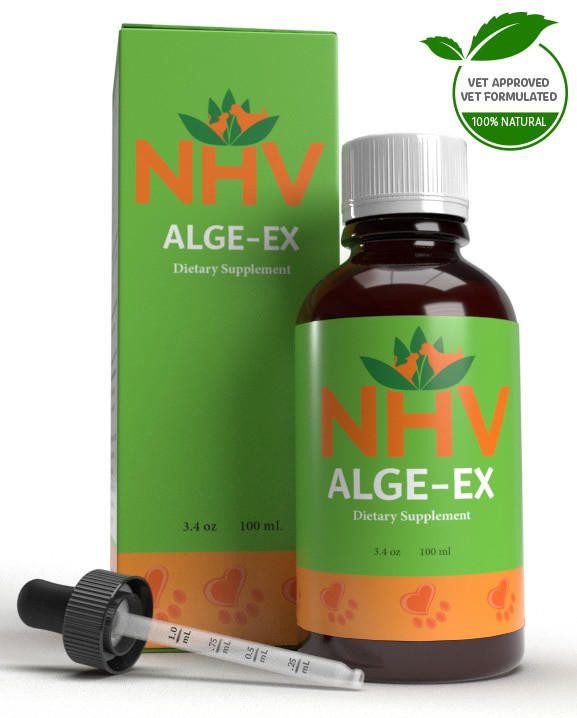
Support for Seasonal Allergy in Dogs
buy 2 and save $3
3 month supply for a small to medium size pet.
Fast and effective relief for your dog’s seasonal environmental allergy by reducing symptoms associated with allergies in dogs caused by pollen, mold, and more.

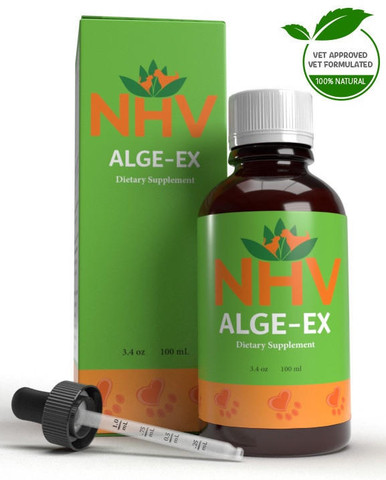
Fast and effective relief for your dog’s seasonal environmental allergy by reducing symptoms associated with allergies in dogs caused by pollen, mold, and more.

Dogs can have seasonal allergies just like people. A dog’s immune system will react to everyday allergens found in the environment. Like people, dogs can have an allergy to pollen, mold, grass, ragweed, and dust mites. They can also be allergic to certain household products such as cleaners, carpet fibers, carpet deodorizers, insecticides, rubber, etc. and contract contact dermatitis.
Your pet’s immune system can overreact to these common unharmful environmental substances. You can help support your pet’s immune reaction to these airborne irritants by using safe and natural herbal supplements.
It’s best to first ensure that your dog has a seasonal allergy and is not dealing with skin allergies or food allergies. If you suspect this, our pet experts can offer different types of suggestions to help, like an elimination diet or novel protein diet for food allergies.
Alge-Ex is made with natural ingredients that are powerful against the causes of allergies, but gentle on your pet’s body. It was formulated by a holistic veterinarian and a master herbalist with a combined experience of over 50 years using plant extracts such as eyebright, feverfew, and European goldenrod" (2 instances). The natural properties of these ingredients help to reduce inflammation and irritation, and regulate your pet’s histamine response.
Bathing your pet is also an excellent way of helping your dog cope with a seasonal allergy. Bathing helps remove allergens and also provides relief. Make sure to give your pet plenty of filtered water.
Never attempt to diagnose your dog on your own. Your vet will be able to perform the required tests and make the necessary suggestions.
Eyebright - An herb that has a long history of use for its anti-inflammatory, antibacterial, antifungal, anticatarrhal, and antiviral activities. Due to its anti-inflammatory properties, eyebright is used for upper respiratory tract infections, hay fever, sinusitis, and catarrh (inflammation of the mucous membranes). As an astringent, it is used for dry congestion. It is considered to be useful for seasonal allergies and other nasal irritations in dogs. It also relieves itchy eyes.
Ginger - A pungent and aromatic root used as a spice to enhance flavor in food. The part used is the rhizome which has been used for thousands of years for nausea and gastrointestinal relief. Research has shown that ginger has excellent antioxidant and anti-inflammatory properties.
Feverfew - An herb originally native to Eastern Europe. It has been used to reduce migraines. Studies have shown that feverfew inhibits the release of histamine and serotonin. It is considered to be very safe for dogs and cats, and is used as an alternative to aspirin, which can be toxic to cats.
European Golden Rod - An herb with anti-inflammatory, anticatarrhal, and antioxidant properties. It helps increase renal blood flow and the glomerular filtration rate without stimulating the loss of sodium and chloride.
Echinacea - In human and animal experiments, Echinacea preparations have been shown to have immunostimulant effects. Its defense against microorganisms help the body fight infections and remove invading bacteria. Echinacea also supports the lymph system, which in turn expels waste from the tissues.
Select your pet's weight to determine the correct dose.
To be taken twice daily. Determine your pet’s weight and then use the easy chart below to determine the correct dose. This is the minimum dosage.
Pet's Weight Dosage
0 - 15 lb = 0.5 ml
16 - 30 lb = 1.0 ml
31 - 45 lb = 1.5 ml
46 - 60 lb = 2.0 ml
61 - 75 lb = 2.5 ml
Over 75 lb = 3.0 ml
How to Administer: Shake well before use. The easiest method is to use the dropper provided and place the drops into your pet’s food or favorite treat. You can also use the dropper and squirt directly into the pet’s mouth. Some pets can be finicky, if this occurs consider hiding the drops in foods most pet’s love such as fish, chicken, yogurt, or a favorite treat. If your pet only eats dry food then soak a few kibbles at feeding time.
For Best Results
Herbal dietary supplements are beneficial to the health and well-being of your pet and are safe for long-term use. Every pet responds to natural herbal supplements differently, therefore it is important to be consistent and administer the product daily. Supplements generally take two to four weeks to take effect, however this will vary from one animal to the next.
Product Storage
All NHV Natural Pet Products are pure herbal extracts and contain no artificial additives, preservatives, or coloring. Shelf life after opening is 6 months and must be refrigerated after opening.
Cautions and Contraindications
Do not use Alge-Ex in pregnant or nursing animals.
Speak to your vet before using our products. A second visit is recommended if your pet’s condition does not improve, or deteriorates after continued use of the supplements.
All information provided by NHV Natural Pet Products is for educational purposes only.
Dogs can have seasonal allergies just like people. A dog’s immune system will react to everyday allergens found in the environment. Like people, dogs can have an allergy to pollen, mold, grass, ragweed, and dust mites. They can also be allergic to certain household products such as cleaners, carpet fibers, carpet deodorizers, insecticides, rubber, etc. and contract contact dermatitis.
Your pet’s immune system can overreact to these common unharmful environmental substances. You can help support your pet’s immune reaction to these airborne irritants by using safe and natural herbal supplements.
It’s best to first ensure that your dog has a seasonal allergy and is not dealing with skin allergies or food allergies. If you suspect this, our pet experts can offer different types of suggestions to help, like an elimination diet or novel protein diet for food allergies.
Alge-Ex is made with natural ingredients that are powerful against the causes of allergies, but gentle on your pet’s body. It was formulated by a holistic veterinarian and a master herbalist with a combined experience of over 50 years using plant extracts such as eyebright, feverfew, and European goldenrod" (2 instances). The natural properties of these ingredients help to reduce inflammation and irritation, and regulate your pet’s histamine response.
Bathing your pet is also an excellent way of helping your dog cope with a seasonal allergy. Bathing helps remove allergens and also provides relief. Make sure to give your pet plenty of filtered water.
Never attempt to diagnose your dog on your own. Your vet will be able to perform the required tests and make the necessary suggestions.
Eyebright - An herb that has a long history of use for its anti-inflammatory, antibacterial, antifungal, anticatarrhal, and antiviral activities. Due to its anti-inflammatory properties, eyebright is used for upper respiratory tract infections, hay fever, sinusitis, and catarrh (inflammation of the mucous membranes). As an astringent, it is used for dry congestion. It is considered to be useful for seasonal allergies and other nasal irritations in dogs. It also relieves itchy eyes.
Ginger - A pungent and aromatic root used as a spice to enhance flavor in food. The part used is the rhizome which has been used for thousands of years for nausea and gastrointestinal relief. Research has shown that ginger has excellent antioxidant and anti-inflammatory properties.
Feverfew - An herb originally native to Eastern Europe. It has been used to reduce migraines. Studies have shown that feverfew inhibits the release of histamine and serotonin. It is considered to be very safe for dogs and cats, and is used as an alternative to aspirin, which can be toxic to cats.
European Golden Rod - An herb with anti-inflammatory, anticatarrhal, and antioxidant properties. It helps increase renal blood flow and the glomerular filtration rate without stimulating the loss of sodium and chloride.
Echinacea - In human and animal experiments, Echinacea preparations have been shown to have immunostimulant effects. Its defense against microorganisms help the body fight infections and remove invading bacteria. Echinacea also supports the lymph system, which in turn expels waste from the tissues.
Select your pet's weight to determine the correct dose.
To be taken twice daily. Determine your pet’s weight and then use the easy chart below to determine the correct dose. This is the minimum dosage.
Pet's Weight Dosage
0 - 15 lb = 0.5 ml
16 - 30 lb = 1.0 ml
31 - 45 lb = 1.5 ml
46 - 60 lb = 2.0 ml
61 - 75 lb = 2.5 ml
Over 75 lb = 3.0 ml
How to Administer: Shake well before use. The easiest method is to use the dropper provided and place the drops into your pet’s food or favorite treat. You can also use the dropper and squirt directly into the pet’s mouth. Some pets can be finicky, if this occurs consider hiding the drops in foods most pet’s love such as fish, chicken, yogurt, or a favorite treat. If your pet only eats dry food then soak a few kibbles at feeding time.
For Best Results
Herbal dietary supplements are beneficial to the health and well-being of your pet and are safe for long-term use. Every pet responds to natural herbal supplements differently, therefore it is important to be consistent and administer the product daily. Supplements generally take two to four weeks to take effect, however this will vary from one animal to the next.
Product Storage
All NHV Natural Pet Products are pure herbal extracts and contain no artificial additives, preservatives, or coloring. Shelf life after opening is 6 months and must be refrigerated after opening.
Cautions and Contraindications
Do not use Alge-Ex in pregnant or nursing animals.
Speak to your vet before using our products. A second visit is recommended if your pet’s condition does not improve, or deteriorates after continued use of the supplements.
All information provided by NHV Natural Pet Products is for educational purposes only.
immune & allergy support
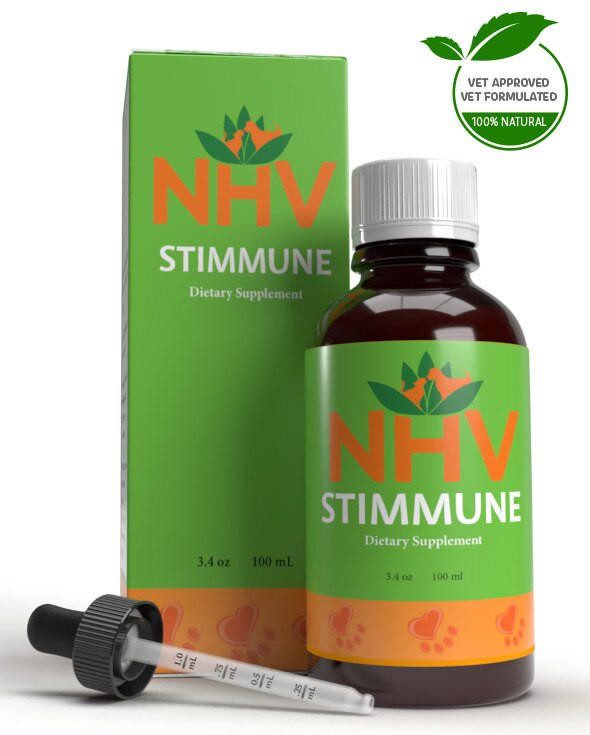
Natural Dog Food Allergy Supplement and Immune Support.
buy 2 and save $3
3 month supply for a small to medium size
Soothes food allergies, skin allergies (dermatitis), and infection. Helps relieve a variety of symptoms related to allergies. Supports a healthy balance of the immune system in pets with conditions such as autoimmune disease.

Soothes food allergies, skin allergies (dermatitis), and infection. Helps relieve a variety of symptoms related to allergies. Supports a healthy balance of the immune system in pets with conditions such as autoimmune disease.
Stimmune helps balance the immune system and helps ease allergy symptoms that can make your dog miserable. Stimmune is an all-natural, vet-formulated dog allergy immune supplement that will help your pet deal with dog food allergies as well as other immune related disorders.
Stimmune can provide dog allergy help with allergic reactions related to food, as well as environmental allergies including reactions to fleas, insect bites, food and other environmental factors. For more acute seasonal or environmental allergies, please try Alge-Ex for a remedy specifically formulated for your dog.
An allergy is an overreaction of the immune system to a normally harmless substance called an antigen. Allergies in dogs often occur when allergens are inhaled, ingested, or absorbed by the body. When this occurs, the immune system becomes over-reactive to substances it believes are harmful. This reaction causes a release of histamine, causing the common allergy symptoms in your pet.
The cause of allergies in dogs can be difficult to determine. While it is always best to eliminate the cause altogether, like omitting a specific food from their diet, some causes can be nearly impossible to totally eradicate, like dust mites or pollen. This is where a dog allergy supplement that is taken daily can help relieve your loved one of common allergens, even when you're not exactly sure what they are allergic to.
Dog food allergy support is close at hand with Stimmune added into your pet’s daily regimen. This 100% natural herbal supplement was formulated by a holistic veterinarian to comprehensively care for your pet’s health.
Explore our Pet Expert Q&A to ask questions about your pet’s allergic reactions or view questions that other concerned pet owners like you have posted. Or, visit our blog to learn how to prevent food allergies in dogs and cats.

Astragalus – Stimulates liver function and helps balance the immune system. High in antioxidants it also helps protect against oxidative damage.
Echinacea Purpurea – Reduces inflammation, helps boost the immune system and efficiently fights infection.
Oregon Grape – Has antibiotic, anti-inflammatory and immunostimulatory properties.
Asian Ginseng – Has been used for thousands of years to help against various health issues. This antioxidant herb helps balance the immune system, helps the body fight infections and helps the body cope against stress.
Myrrh – An astringent that relieves irritated skin, Myrrh is high in anti-inflammatory and antioxidant effects.
Select your pet's weight to determine the correct dose.
To be taken twice daily. Determine your pet’s weight and then use the easy chart below to determine the correct dose. This is the minimum dosage.
Pet's Weight Dosage
0 - 15 lb = 0.5 ml
16 - 30 lb = 1.0 ml
31 - 45 lb = 1.5 ml
46 - 60 lb = 2.0 ml
61 - 75 lb = 2.5 ml
Over 75 lb = 3.0 ml
For small animals (rabbits, ferrets), avians and reptiles use 1 drop for every 2 lb of body weight.
How to Administer
Shake well before use. The easiest method is to use the dropper provide and places the drops into your pet’s food or favorite treat. You can also use the dropper and squirt directly into the pet’s mouth.
Some pets can be finicky, if this occurs consider hiding the drops in foods most pet’s love such as fish, chicken or yogurt or a favorite treat. If your pet only eats dry food then soak a few kibbles at feeding time.
For Best Results
Herbal dietary supplements are beneficial to the health and wellbeing of your pet and are safe for long-term use. Every pet responds to natural herbal supplements differently, therefore it is important to be consistent and administer the product daily. Supplements generally take two to four weeks to take effect, however this will vary from one animal to the next.
Product Storage
All NHV Natural Pet Products are pure herbal extracts and contain no artificial additives, preservatives or coloring. Shelf life after opening is 6 months and must be refrigerated after opening.
Cautions and Contraindications
Do not use Stimmune in pregnant or nursing animals. Speak to your vet before using our products. A second visit is recommended if your pet’s condition does not improve, or deteriorates after continued use of the supplements.
All information provided by NHV Natural Pet Products is for educational purposes only.
Stimmune helps balance the immune system and helps ease allergy symptoms that can make your dog miserable. Stimmune is an all-natural, vet-formulated dog allergy immune supplement that will help your pet deal with dog food allergies as well as other immune related disorders.
Stimmune can provide dog allergy help with allergic reactions related to food, as well as environmental allergies including reactions to fleas, insect bites, food and other environmental factors. For more acute seasonal or environmental allergies, please try Alge-Ex for a remedy specifically formulated for your dog.
An allergy is an overreaction of the immune system to a normally harmless substance called an antigen. Allergies in dogs often occur when allergens are inhaled, ingested, or absorbed by the body. When this occurs, the immune system becomes over-reactive to substances it believes are harmful. This reaction causes a release of histamine, causing the common allergy symptoms in your pet.
The cause of allergies in dogs can be difficult to determine. While it is always best to eliminate the cause altogether, like omitting a specific food from their diet, some causes can be nearly impossible to totally eradicate, like dust mites or pollen. This is where a dog allergy supplement that is taken daily can help relieve your loved one of common allergens, even when you're not exactly sure what they are allergic to.
Dog food allergy support is close at hand with Stimmune added into your pet’s daily regimen. This 100% natural herbal supplement was formulated by a holistic veterinarian to comprehensively care for your pet’s health.
Explore our Pet Expert Q&A to ask questions about your pet’s allergic reactions or view questions that other concerned pet owners like you have posted. Or, visit our blog to learn how to prevent food allergies in dogs and cats.

Astragalus – Stimulates liver function and helps balance the immune system. High in antioxidants it also helps protect against oxidative damage.
Echinacea Purpurea – Reduces inflammation, helps boost the immune system and efficiently fights infection.
Oregon Grape – Has antibiotic, anti-inflammatory and immunostimulatory properties.
Asian Ginseng – Has been used for thousands of years to help against various health issues. This antioxidant herb helps balance the immune system, helps the body fight infections and helps the body cope against stress.
Myrrh – An astringent that relieves irritated skin, Myrrh is high in anti-inflammatory and antioxidant effects.
Select your pet's weight to determine the correct dose.
To be taken twice daily. Determine your pet’s weight and then use the easy chart below to determine the correct dose. This is the minimum dosage.
Pet's Weight Dosage
0 - 15 lb = 0.5 ml
16 - 30 lb = 1.0 ml
31 - 45 lb = 1.5 ml
46 - 60 lb = 2.0 ml
61 - 75 lb = 2.5 ml
Over 75 lb = 3.0 ml
For small animals (rabbits, ferrets), avians and reptiles use 1 drop for every 2 lb of body weight.
How to Administer
Shake well before use. The easiest method is to use the dropper provide and places the drops into your pet’s food or favorite treat. You can also use the dropper and squirt directly into the pet’s mouth.
Some pets can be finicky, if this occurs consider hiding the drops in foods most pet’s love such as fish, chicken or yogurt or a favorite treat. If your pet only eats dry food then soak a few kibbles at feeding time.
For Best Results
Herbal dietary supplements are beneficial to the health and wellbeing of your pet and are safe for long-term use. Every pet responds to natural herbal supplements differently, therefore it is important to be consistent and administer the product daily. Supplements generally take two to four weeks to take effect, however this will vary from one animal to the next.
Product Storage
All NHV Natural Pet Products are pure herbal extracts and contain no artificial additives, preservatives or coloring. Shelf life after opening is 6 months and must be refrigerated after opening.
Cautions and Contraindications
Do not use Stimmune in pregnant or nursing animals. Speak to your vet before using our products. A second visit is recommended if your pet’s condition does not improve, or deteriorates after continued use of the supplements.
All information provided by NHV Natural Pet Products is for educational purposes only.
Published: March 29, 2024